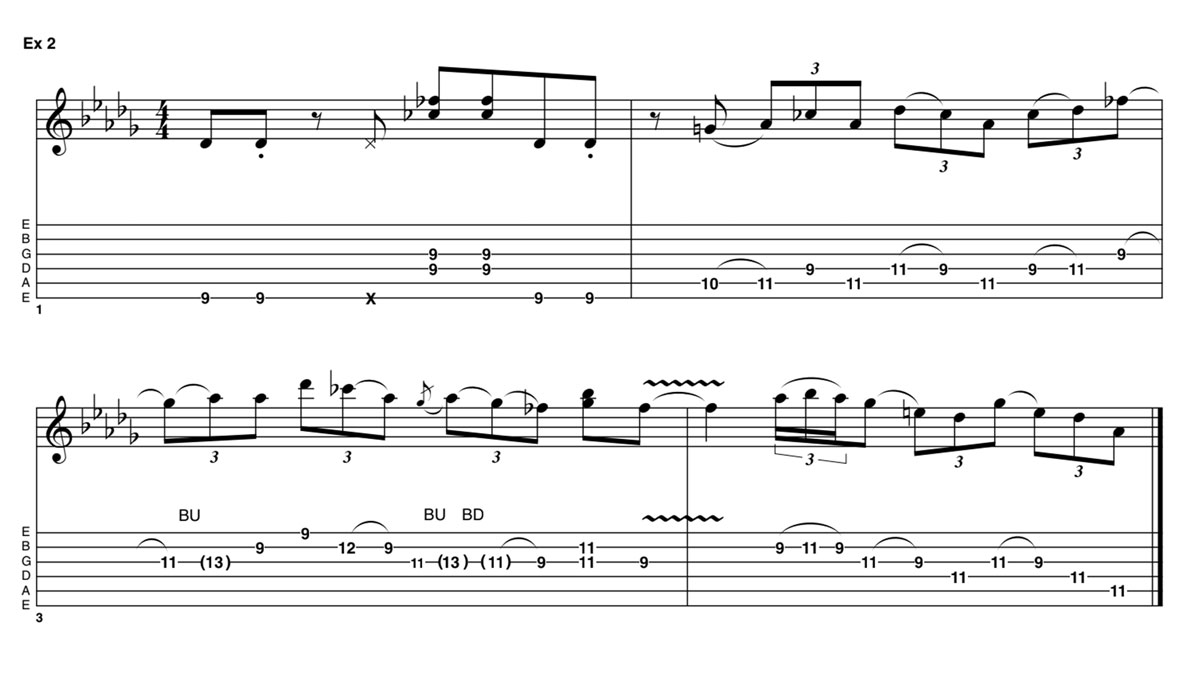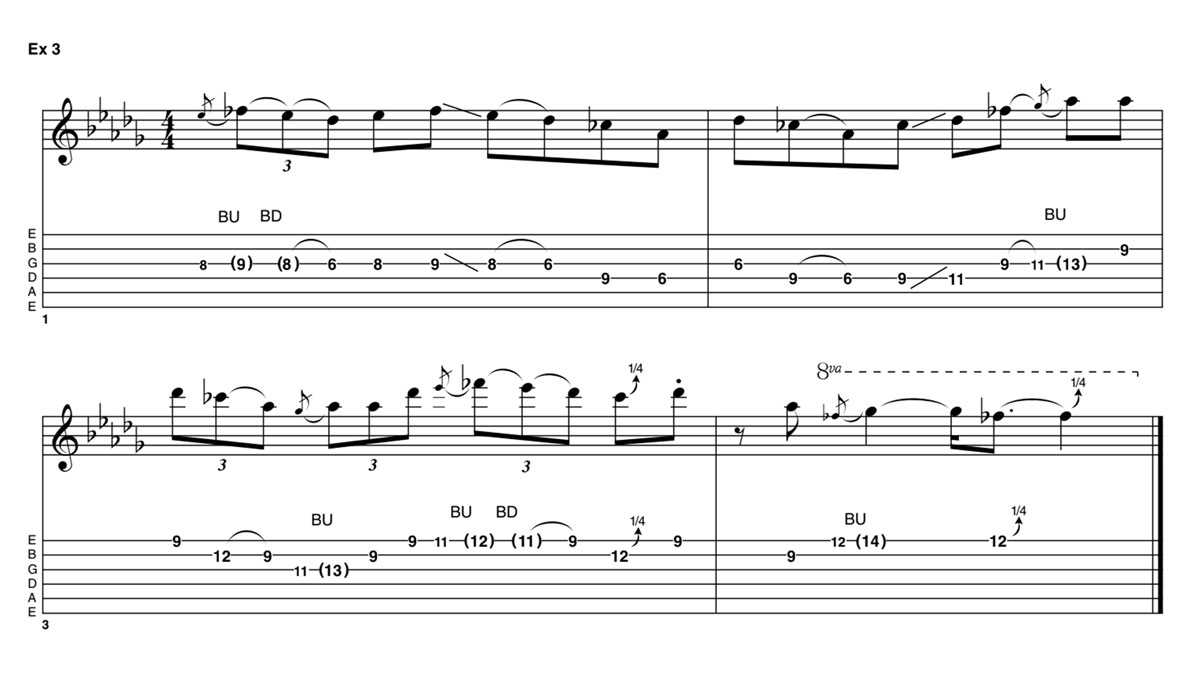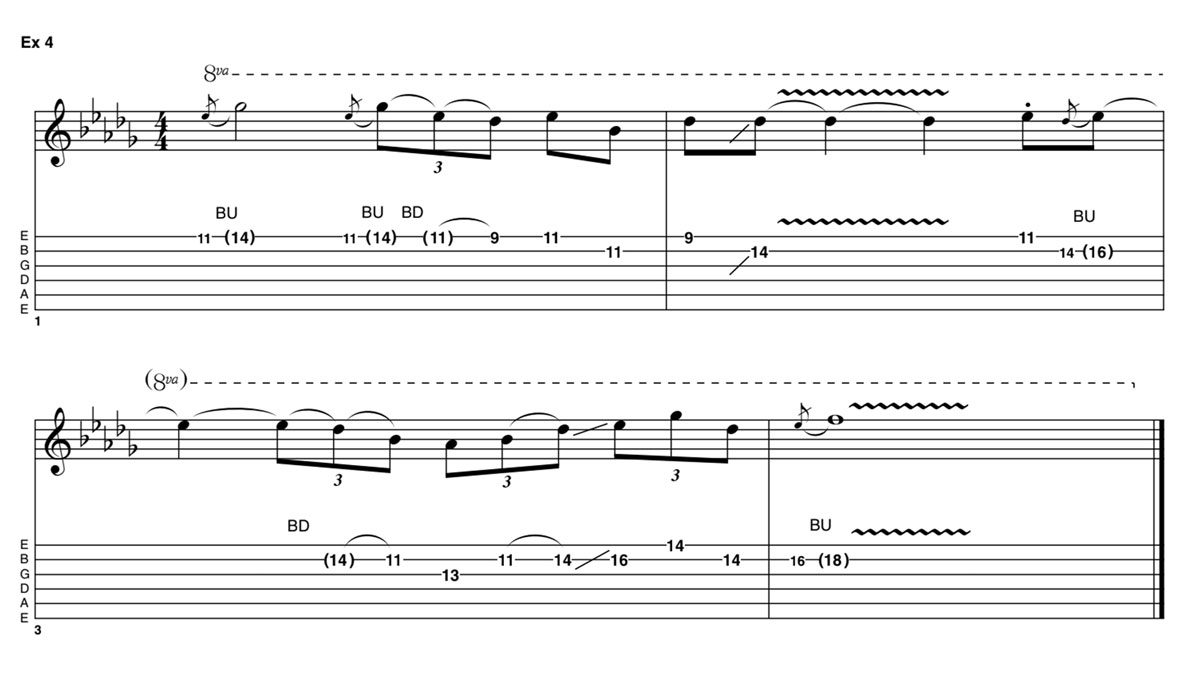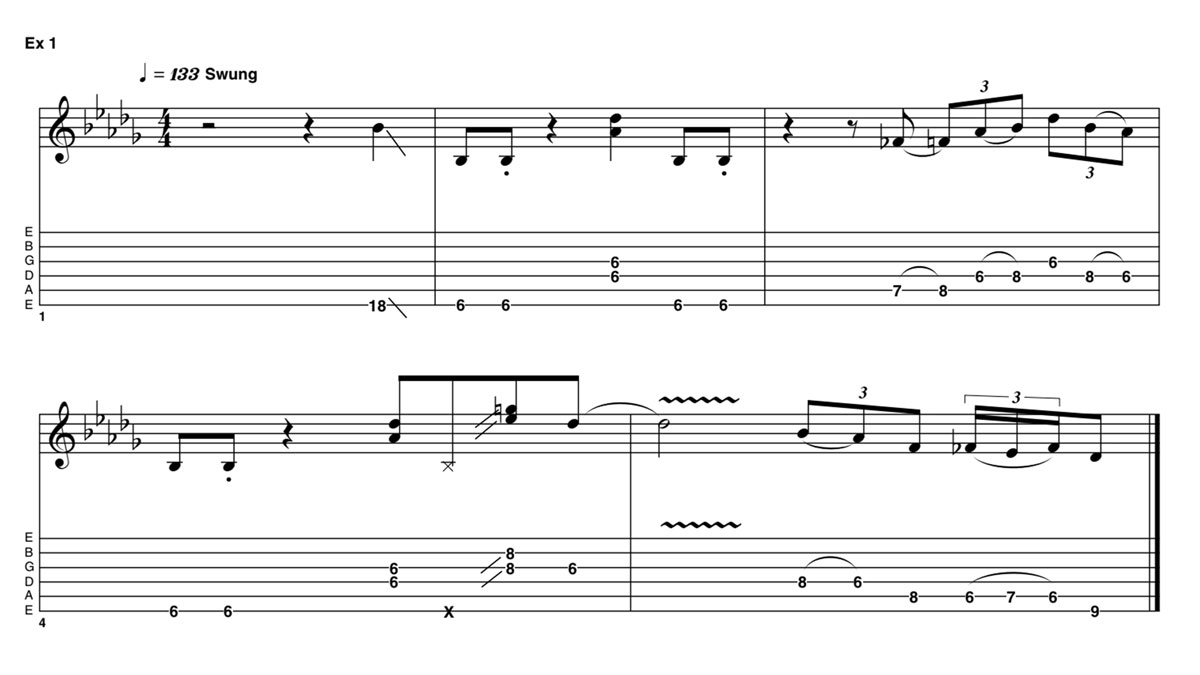Upgrade your leads by learning to solo over non-diatonic blues chord changes
Richard Barrett is on a mission to make you a better blues player - with full audio examples and backing tracks
I want to address an issue that is often avoided in this style; the situation when a chord change is non-diatonic - or to put it another way, such a significant change that holding onto the same scale or pattern will severely limit your options.
In this case, the backing track’s main theme of shifting between Bb minor and Db minor means you’ll need to reflect those changes somehow. One way of doing this is to shift key with the chord changes, using minor pentatonic shapes in Bb and Db.
This is completely valid, and the way I approach a lot of this solo, especially at the start, where I’m basically playing rhythm with some fills. However, the time may come when you feel a bit trapped by the need to keep shifting up and down - and over an extended solo, it may start to sound repetitive, too.
To avoid this, we can take a methodical approach; earmark the notes from each scale that will fit (or that you like the sound of - it can be as dissonant as you like!) over each chord. For example, the Ab, Bb, Db and Eb from the Bb minor pentatonic can all work over the Db minor - though not if you’re landing heavily on the Bb root, which is fine as a passing note, but it might sound like you’re struggling if you keep going there...
Another approach I’ve tried is to build a Db dorian shape (Db, Eb, E, Gb, Ab, Bb, B) around the Bb minor pentatonic between the 6th and 9th frets - this fits well over the Db minor and means you can stay in one position. This is a tricky one but great for focusing on chord changes and breaking out of a rut.
Example 1
To kick off proceedings, I’ve gone with a rhythm and fills-based approach, as there is only bass and drums at this point on the backing track - more instruments join in later. Establishing a foundation of the two pentatonic/chord shapes of Bb minor and Db minor is also helpful before branching out into alternative positions and scales. This feel and tempo also requires accurate timing, so that’s another benefit of this example!
Example 2
Shifting up to Db (yes, in fretboard terms the same as C sharp, if that helps!), I’m basically using the same pattern with a couple of extra embellishments. As well as changing key in this way, it’s worth considering how you want to integrate the rhythm and lead playing in this situation. Having implied the chords a few times, I’m feeling more free to venture into single notes - and the cheeky minor 6th (implied by theBb) in the last bar!
All the latest guitar news, interviews, lessons, reviews, deals and more, direct to your inbox!

Exercise 3
After revisiting the Bb minor pentatonic for eight bars in a similar vein to Ex 2, we now change approach by switching briefly to Db dorian, before sliding up to the relatively safe haven of the Db minor pentatonic. A fairly subtle move, but enough to give some harmonic variety - and to feel totally justified in relapsing to a favorite blues lick or two!

Exercise 4
This phrase comes straight off the back of a Db minor pentatonic run, so is a neat solution to the problem of how to switch seamlessly into the final four chords of the progression.All of these fit over the Bb minor pentatonic, but to create a bit of a crescendo I’ve used slides to ascend to a couple of higher registers/different shapes of the scale.

Hear it here
John Scofield - A Go Go
John Scofield is probably more known to jazz than blues, but he brings a lot of blues to his music in the form of string bends and distorted tones that would not be considered particularly jazzy!
Check out his phrasing on the title track, which uses some of the same melodic devices as the examples (but over a static chord). This album makes for a great education in phrasing, but if you’re short on time, skip to Jeep On 35 and Green Tea to hear John negotiate some tricky changes.
Jeff Beck - There And Back
What a way to begin the 80s! Jeff is always ahead of the curve - check out Star Cycle to hear him manage some deceptively tricky changes. Also, The Pump - which I’m aware I’ve cited before, but the apparent simplicity of this track is quite a trap - especially in the outro section.
If you’re looking for more complicated key changes, try El Becko. This is played with a slide, but the principle is the same - you’ll need to know those chords!
Steve Lukather - Transition
Most would agree that as well as his undeniable technical skill, Steve has a way with melodies and chord changes that have kept him at the top of the heap for decades. Have a listen to Judgement Day, Creep Motel and the title track to hear how he handles some complex changes while managing to sound completely in control.
There is a strong Jeff Beck influence and lots of whammy bar, but remember Steve sounds just as cool on a Les Paul!
As well as a longtime contributor to Guitarist and Guitar Techniques, Richard is Tony Hadley’s longstanding guitarist, and has worked with everyone from Roger Daltrey to Ronan Keating.


